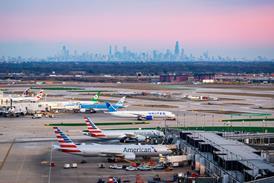New Zealand investigators have confirmed that two engine failures on Air New Zealand Boeing 787-9s last December were caused by known issues with the Rolls-Royce Trent 1000s intermediate pressure turbine (IPT) blades.
The Transport Accident Investigation Commission’s interim report on the two failures, which occurred on ZK-NZE on 5 December, and ZK-NZF on 6 December, shows that both aircraft were fitted with ‘Package C’ Trent 1000 engines that failed after take-off from Auckland, forcing the aircraft to return.
Examination of the engines found that they suffered major damage due to the separation of IPT blades, caused by corrosion fatigue cracking.
The Commission noted that the IPT blade release was a “known problem with the Trent 1000” that required modification to the engine. Unmodified engines were being managed through a service bulletin and a predictive replacement model approved by the European Aviation Safety Agency.
Both blade separation incidents occurred earlier than the modelling suggested, however, after which “operator-specific offsets” were applied to Air NZ’s regime.
It also put in place procedures to ensure that none of its 787s operated with two unmodified engines. EASA and the US Federal Aviation Administration later implemented airworthiness directives to the same effect.
The Commission did not issue any recommendations in the report, noting that “further action by EASA and the United States Federal Aviation Authority meant final recommendations were not needed,” Mr Williams said.
Nonetheless, it will continue its investigation, with a focus on reviewing how Air NZ’s engine management and flight procedures might contribute to early IPT blade failures.
Source: Cirium Dashboard

























